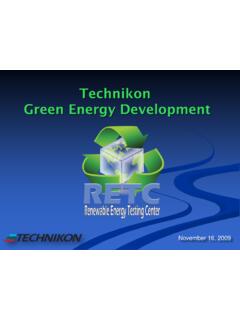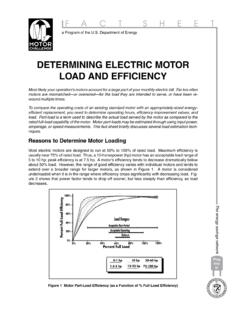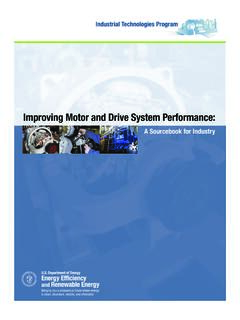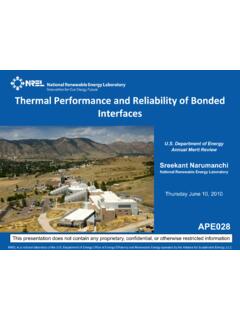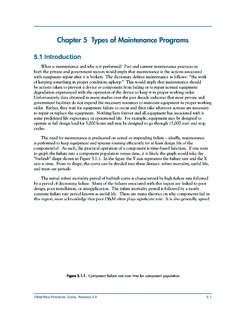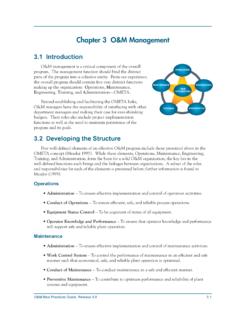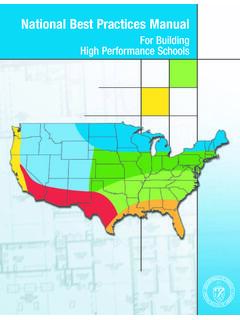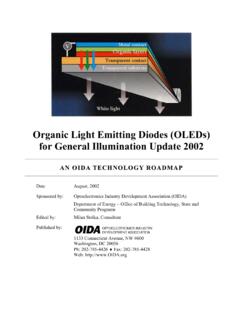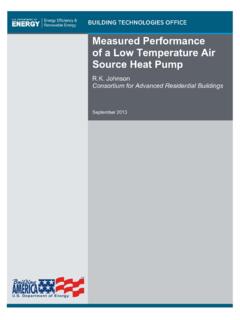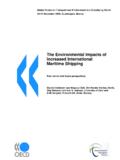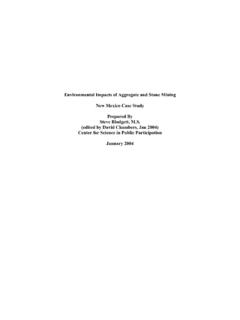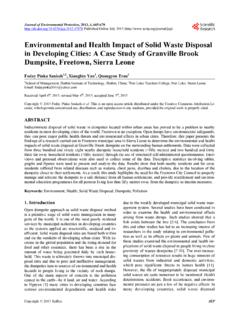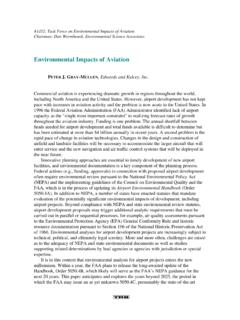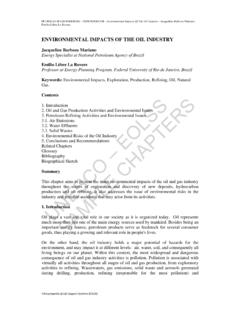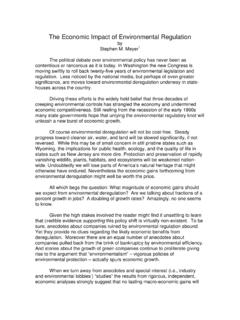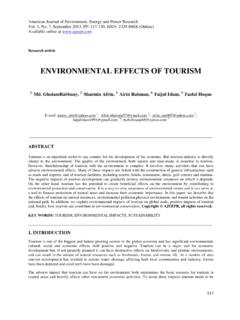Transcription of Environmental Impacts, Attributes, and Feasibility Criteria
1 CHAPTER 8 Environmental Impacts, Attributes, and Feasibility Criteria Scope and Approach to Geothermal Environmental Effects _ _ _ _ _ _ _ _ _ _8 3 Potential Environmental Impacts from Geothermal Development _ _ _ _ _ _8 5 Gaseous emissions _ _ _ _ _ _ _ _ _ _ _ _ _ _ _ _ _ _ _ _ _ _ _ _ _ _ _ _ _ _ _ _ _8 5 Water pollution _ _ _ _ _ _ _ _ _ _ _ _ _ _ _ _ _ _ _ _ _ _ _ _ _ _ _ _ _ _ _ _ _ _ _8 6 Solids emissions _ _ _ _ _ _ _ _ _ _ _ _ _ _ _ _ _ _ _ _ _ _ _ _ _ _ _ _ _ _ _ _ _ _8 6 Noise pollution _ _ _ _ _ _ _ _ _ _ _ _ _ _ _ _ _ _ _ _ _ _ _ _ _ _ _ _ _ _ _ _ _ _ _8 7 Land use _ _ _ _ _ _ _ _ _ _ _ _ _ _ _ _ _ _ _ _ _ _ _ _ _ _ _ _ _ _ _ _ _ _ _ _ _ _8 7 Land subsidence _ _ _ _ _ _ _ _ _ _ _ _ _ _ _ _ _ _
2 _ _ _ _ _ _ _ _ _ _ _ _ _ _ _ _8 9 Induced seismicity _ _ _ _ _ _ _ _ _ _ _ _ _ _ _ _ _ _ _ _ _ _ _ _ _ _ _ _ _ _ _ _ _8 9 Induced landslides _ _ _ _ _ _ _ _ _ _ _ _ _ _ _ _ _ _ _ _ _ _ _ _ _ _ _ _ _ _ _ _8 10 Water use _ _ _ _ _ _ _ _ _ _ _ _ _ _ _ _ _ _ _ _ _ _ _ _ _ _ _ _ _ _ _ _ _ _ _ _ _8 10 Disturbance of natural hydrothermal manifestations _ _ _ _ _ _ _ _ _ _ _ _ _8 12 Disturbance of wildlife habitat, vegetation, and scenic vistas _ _ _ _ _ _ _ _ _8 12 Catastrophic events _ _ _ _ _ _ _ _ _ _ _ _ _ _ _ _ _ _ _ _ _ _ _ _ _ _ _ _ _ _ _ _8 15 Thermal pollution _ _ _ _ _ _ _ _ _ _ _ _ _ _ _ _ _ _ _ _ _ _ _ _ _ _ _ _ _ _ _ _ _8 15 Environmental Attributes of EGS Power Projects _ _ _ _ _ _ _ _ _ _ _ _ _ _ _ _8 16 No greenhouse gas emissions during operations _ _ _ _ _ _ _ _ _ _ _ _ _ _ _8 16 Modest use of land _ _ _ _ _ _ _ _ _ _ _ _ _ _ _ _ _ _ _ _ _ _ _ _ _ _ _ _ _ _ _ _8 16 Possible sequestration of carbon dioxide _ _ _ _ _ _ _ _ _ _ _ _ _ _ _ _ _ _ _ _8 16 Low overall environment impact _ _ _ _ _ _ _ _ _ _ _ _ _ _ _ _ _ _ _ _ _ _ _ _ _8 17 8 Environmental Criteria
3 For Project Feasibility _ _ _ _ _ _ _ _ _ _ _ _ _ _ _ _ _ _8 17 Concluding Remarks _ _ _ _ _ _ _ _ _ _ _ _ _ _ _ _ _ _ _ _ _ _ _ _ _ _ _ _ _ _ _ _ _8 18 References _ _ _ _ _ _ _ _ _ _ _ _ _ _ _ _ _ _ _ _ _ _ _ _ _ _ _ _ _ _ _ _ _ _ _ _ _ _ _ _ _ _ _8 19 Chapter 8 Environmental Impacts, Attributes, and Feasibility Criteria Scope and Approach to Geothermal Environmental Effects In the United States, the Environmental impact of any type of power project is subject to many forms of regulation. All of the following laws and regulations play a role before any geothermal development project can be brought to fruition (Kagel et al., 2005): Clean Air Act National Environmental Policy Act National Pollutant Discharge Elimination System Permitting Program Safe Drinking Water Act Resource Conservation and Recovery Act Toxic Substance Control Act Noise Control Act Endangered Species Act Archaeological Resources Protection Act Hazardous Waste and Materials Regulations Occupational Health and Safety Act Indian Religious Freedom Act.
4 Thus, it is highly unlikely that any geothermal power plant will be a threat to the environment anywhere in the United States, given the comprehensive spectrum of regulations that must be satisfied. The potential Environmental impacts of conventional hydrothermal power generation are widely known. Several articles and reports have documented the various potential impacts from geothermal dry steam, flash steam, and binary energy conversion systems. The general conclusion from all studies is that emissions and other impacts from geothermal plants are dramatically lower than other forms of electrical generation. The following references, chosen from among many possible ones, provide detailed discussions: Armstead, 1983; Armstead and Tester, 1987; Burnham et al.
5 , 1993; DiPippo, 1991a; DiPippo, 1991b; Kagel et al., 2005; Mock et al., 1997; Pasqualetti, 1980; and Tester et al., 2005. Thus, the lessons learned from the hundreds of existing geothermal power plants can be used to ensure that future EGS systems will have similar or even lower Environmental impacts. Our focus in this report is on systems to generate electricity. Ground source heat pumps are another means of utilizing geothermal energy on a distributed basis for space heating and cooling of buildings (see Section ). The Environmental impact of such systems is quite limited because they are usually installed during building construction and normally utilize a subsurface heat exchanger, buried well below the frost line.
6 The Environmental impacts of geothermal heat pumps are not addressed further, because they are beyond the scope of this study (see Mock et al., 1997.) 8 3 Chapter 8 Environmental Impacts, Attributes, and Feasibility Criteria There are several potential Environmental impacts from any geothermal power development. These include: Gaseous emissions Water pollution Solids emissions Noise pollution Land use Land subsidence Induced seismicity Induced landslides Water use Disturbance of natural hydrothermal manifestations Disturbance of wildlife habitat and vegetation Altering natural vistas Catastrophic events. Despite this long list, current and near term geothermal energy technologies generally present much lower overall Environmental impact than do conventional fossil fueled and nuclear power plants.
7 For example, the power plant is located above the geothermal energy resource eliminating the need (a) to physically mine the energy source (the fuel ) in the conventional sense and, in the process, to disturb the Earth s surface, and (b) to process the fuel and then use additional energy to transport the fuel over great distances while incurring additional Environmental impacts. Furthermore, the geothermal energy conversion equipment is relatively compact, making the overall footprint of the entire system small. With geothermal energy, there are no atmospheric discharges of nitrogen oxides or particulate matter, and no need to dispose of radioactive waste materials.
8 There are, however, certain impacts that must be considered and managed if geothermal energy, including EGS, is to be developed as a larger part of a more environmentally sound, sustainable 8 4 energy portfolio for the future. Most of the potentially important Environmental impacts of geothermal power plant development are associated with ground water use and contamination, and with related concerns about land subsidence and induced seismicity as a result of water injection and production into and out of a fractured reservoir formation. Issues of air pollution, noise, safety, and land use also merit consideration. The next section presents a comprehensive overview of Environmental issues, summarizes the body of experience from hydrothermal plants, contrasts geothermal operations with alternative systems, and estimates the impact from EGS operations.
9 Chapter 8 Environmental Impacts, Attributes, and Feasibility Criteria Potential Environmental Impacts from Geothermal Development Gaseous emissions Gaseous emissions result from the discharge of noncondensable gases (NCGs) that are carried in the source stream to the power plant. For hydrothermal installations, the most common NCGs are carbon dioxide (CO2) and hydrogen sulfide (H2S), although species such as methane, hydrogen, sulfur dioxide, and ammonia are often encountered in low concentrations. In the United States, emissions of H2S distinguished by its rotten egg odor and detectable at 30 parts per billion are strictly regulated by the Environmental Protection Agency (EPA) to avoid adverse impacts on plant and human life.
10 We expect that for most EGS installations, there will be lower amounts of dissolved gases than are commonly found in hydrothermal fluids. Consequently, impacts would be lower and may not even require active treatment and control. Nonetheless, for completeness, we review here the situation encountered today for managing gaseous emissions from hydrothermal plants. Emissions are managed through process design. In steam and flash plants, naturally occurring NCGs in the production fluid must be removed to avoid the buildup of pressure in the condenser and the resultant loss in power from the steam turbine (see Figures and ). The vent stream of NCGs can be chemically treated and/or scrubbed to remove H2S, or the NCGs can be recompressed and injected back into the subsurface with the spent liquid stream from the power plant.

